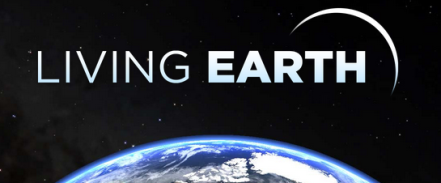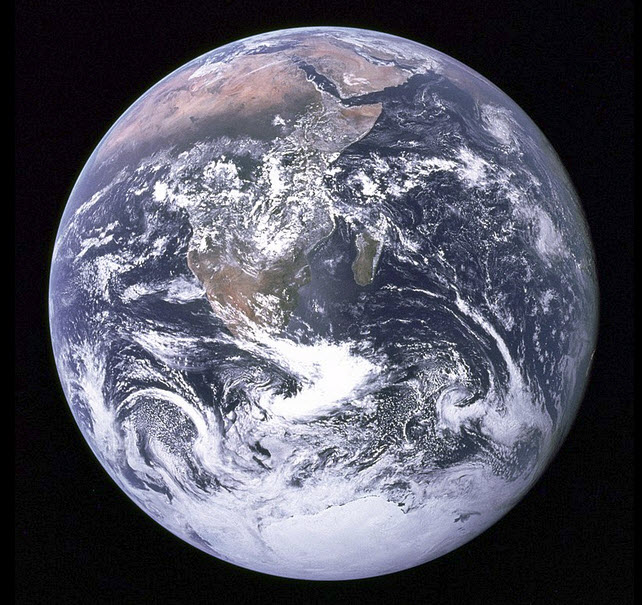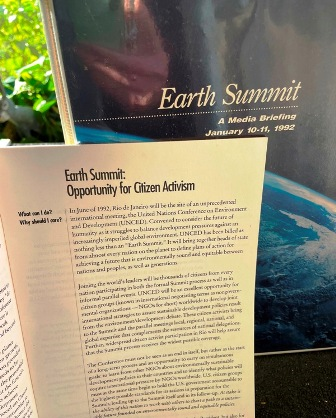2010 Biodiversity Target: Difference between revisions
Siterunner (talk | contribs) No edit summary |
Siterunner (talk | contribs) No edit summary |
||
| (9 intermediate revisions by the same user not shown) | |||
| Line 1: | Line 1: | ||
[[File:Living Earth.png]] | |||
[https://www.greenpolicy360.net/w/Planet_Citizen_Vision_of_Living_Earth '''Our Living Earth'''] | |||
* https://www.greenpolicy360.net/w/File:Living_Earth.png | |||
| |||
<big><big>'''[[Planet Citizen Vision of Living Earth]]'''</big></big> | |||
: [http://www.greenpolicy360.net/w/Earth_Right_Now <big>'''Earth Right Now'''</big>] / [http://www.greenpolicy360.net/w/EarthPOV <big>'''EarthPOV'''</big>] / [http://www.greenpolicy360.net/w/Category:Earth_Observations <big>'''Earth Observations'''</big>] | |||
About the Convention | |||
[[File:Blue Marble photo - Apollo 17.jpg]] | |||
<small>NASA</small> | |||
<big><big>'''See the Big Picture, It's All Connected'''</big></big> | |||
:<small> ''SJS / GreenPolicy360 Siterunner: As interconnected'' [http://www.planetcitizens.org '''''Planet Citizens'''''] ''our challenge is to improve our [https://www.greenpolicy360.net/w/Quality_of_Life '''Quality of Life'''] and [http://www.greenpolicy360.net/w/Category:Global_Security '''Secure our Common Future...'''''] | |||
::''Launch new initiatives, improve the environment, change the way governments run, impact and transform how businesses work'' | |||
:::''We encourage you to join in, dream and create your own green stories venturing on and making a positive difference every day'' | |||
::::''Now is time to go beyond old ways of thinking and shape new visions of our communities and our living home -- [https://www.greenpolicy360.net/w/Earth_and_Space,_Politics '''Planet Earth''']'' | |||
</small> | |||
[[File:Earth Emoji 2.png]] | |||
<big><big>'''Convention on Biological Diversity'''</big></big> | |||
The Convention on Biological Diversity (CBD) is the first global agreement to cover all aspects of biological diversity | |||
* https://en.wikipedia.org/wiki/Convention_on_Biological_Diversity | |||
* https://en.wikisource.org/wiki/United_Nations_Convention_on_Biological_Diversity | |||
<big>'''Convention on Biological Diversity'''</big> | |||
''The Earth’s biological resources are vital to humanity’s economic and social development. As a result, there is growing recognition that biological diversity is a global asset of tremendous value to present and future generations. At the same time, the threat to species and ecosystems has never been so great as it is today. Species extinction caused by human activities continues at an alarming rate. | |||
''In response, the United Nations Environment Programme (UNEP) convened the Ad Hoc Working Group of Experts on Biological Diversity in November 1988 to explore the need for an international convention on biological diversity. Soon after, in May 1989, it established the Ad Hoc Working Group of Technical and Legal Experts to prepare an international legal instrument for the conservation and sustainable use of biological diversity. The experts were to take into account “the need to share costs and benefits between developed and developing countries” as well as “ways and means to support innovation by local people.” | |||
''By February 1991, the Ad Hoc Working Group had become known as the Intergovernmental Negotiating Committee. Its work culminated on 22 May 1992 with the Nairobi Conference for the Adoption of the Agreed Text of the Convention on Biological Diversity.'' | |||
[[File:Earth Summit 1992-s.png]] | |||
Earth Summit, 1992 | |||
''The Convention was opened for signature on 5 June 1992 at the United Nations Conference on Environment and Development (the Rio “Earth Summit”). It remained open for signature until 4 June 1993, by which time it had received 168 signatures. The Convention entered into force on 29 December 1993, which was 90 days after the 30th ratification. The first session of the Conference of the Parties was scheduled for 28 November - 9 December 1994 in the Bahamas.'' | |||
''The Convention on Biological Diversity was inspired by the world community’s growing commitment to sustainable development. It represents a dramatic step forward in the | |||
conservation of biological diversity, the sustainable use of its components, and the fair and equitable sharing of benefits arising from the use of genetic resources.'' | |||
* https://www.cbd.int/doc/legal/cbd-en.pdf | |||
<big>'''[[All Species Day]]'''</big> | |||
'''''2010 Biodiversity Targets''''' | |||
''In April 2002, the Parties to the Convention committed themselves to achieve by 2010 a significant reduction of the current rate of biodiversity loss at the global, regional and national level as a contribution to poverty alleviation and to the benefit of all life on Earth.'' | |||
''This target was subsequently endorsed by the World Summit on Sustainable Development and the United Nations General Assembly and was incorporated as a new target under the Millennium Development Goals.'' | |||
''The Conference of the Parties considered the 2010 Target during deliberations on the Convention's Strategic Plan during its 6th, 7th 8th and 9th meetings. At COP 9, the Parties further considered the evaluation of the Strategic Plan beyond 2010 in its Decision IX/9.'' | |||
* https://www.cbd.int/2010-target/ | |||
UN COP conferences - https://en.wikipedia.org/wiki/United_Nations_Framework_Convention_on_Climate_Change | |||
'''Why Set Biodiversity Targets?''' | |||
''Targets are increasingly being used in various areas of public policy. Clear, long-term outcome-oriented targets that are adopted by the international community can help shape expectations and create the conditions in which all actors, whether Governments, the private sector, or civil society, have the confidence to develop solutions to common problems. By establishing targets and indicators, progress can be assessed and appropriate actions taken.'' | |||
'''Biodiversity is crucial''' | |||
''As demographic pressures and consumption levels increase, biodiversity decreases, and the ability of the natural world to continue delivering the goods and services on which humanity ultimately depends may be undermined.'' | |||
''"Failure to conserve and use biological diversity in a sustainable manner would result in degrading environments, new and more rampant illnesses, deepening poverty and a continued pattern of inequitable and untenable growth," United Nations Secretary-General Kofi Annan warned in August 2005 in a message to an international forum on biodiversity and health. In the same statement Mr. Annan added, “The (Millenium Development) Goals embody the hopes of all people for a world without hunger and poverty, where all live in freedom, with dignity and equity. Biodiversity is crucial to those hopes, especially in the area of health.”'' | |||
''In addition to the 2010 Biodiversity Target, the Convention has established other targets in the Global Strategy for Plant Conservation, and in the Programme of Work on Protected Areas.'' | |||
'''About the Convention''' | |||
History of the Convention | History of the Convention | ||
| Line 86: | Line 168: | ||
Partnership Agreement | Partnership Agreement | ||
[[File:Earth Emoji 2.png]] | |||
[[Category:Anthropocene]] | |||
[[Category:Biodiversity]] | |||
[[Category:Biosphere]] | |||
[[Category:Earth]] | |||
[[Category:Eco-ethics]] | |||
[[Category:Eco-nomics]] | |||
[[Category:Health]] | |||
[[Category:Natural Resources]] | |||
[[Category:Nature]] | |||
[[Category:Planet Citizens]] | |||
[[Category:Rights of Nature]] | |||
[[Category:Seventh Generation Sustainability]] | |||
[[Category:United Nations]] | |||
[[Category:Wildlife]] | |||
[[Category:Whole Earth]] | |||
Latest revision as of 11:27, 3 June 2024
Planet Citizen Vision of Living Earth
NASA
See the Big Picture, It's All Connected
- SJS / GreenPolicy360 Siterunner: As interconnected Planet Citizens our challenge is to improve our Quality of Life and Secure our Common Future...
- Launch new initiatives, improve the environment, change the way governments run, impact and transform how businesses work
- We encourage you to join in, dream and create your own green stories venturing on and making a positive difference every day
- Now is time to go beyond old ways of thinking and shape new visions of our communities and our living home -- Planet Earth
Convention on Biological Diversity
The Convention on Biological Diversity (CBD) is the first global agreement to cover all aspects of biological diversity
Convention on Biological Diversity
The Earth’s biological resources are vital to humanity’s economic and social development. As a result, there is growing recognition that biological diversity is a global asset of tremendous value to present and future generations. At the same time, the threat to species and ecosystems has never been so great as it is today. Species extinction caused by human activities continues at an alarming rate.
In response, the United Nations Environment Programme (UNEP) convened the Ad Hoc Working Group of Experts on Biological Diversity in November 1988 to explore the need for an international convention on biological diversity. Soon after, in May 1989, it established the Ad Hoc Working Group of Technical and Legal Experts to prepare an international legal instrument for the conservation and sustainable use of biological diversity. The experts were to take into account “the need to share costs and benefits between developed and developing countries” as well as “ways and means to support innovation by local people.”
By February 1991, the Ad Hoc Working Group had become known as the Intergovernmental Negotiating Committee. Its work culminated on 22 May 1992 with the Nairobi Conference for the Adoption of the Agreed Text of the Convention on Biological Diversity.
Earth Summit, 1992
The Convention was opened for signature on 5 June 1992 at the United Nations Conference on Environment and Development (the Rio “Earth Summit”). It remained open for signature until 4 June 1993, by which time it had received 168 signatures. The Convention entered into force on 29 December 1993, which was 90 days after the 30th ratification. The first session of the Conference of the Parties was scheduled for 28 November - 9 December 1994 in the Bahamas.
The Convention on Biological Diversity was inspired by the world community’s growing commitment to sustainable development. It represents a dramatic step forward in the conservation of biological diversity, the sustainable use of its components, and the fair and equitable sharing of benefits arising from the use of genetic resources.
2010 Biodiversity Targets
In April 2002, the Parties to the Convention committed themselves to achieve by 2010 a significant reduction of the current rate of biodiversity loss at the global, regional and national level as a contribution to poverty alleviation and to the benefit of all life on Earth.
This target was subsequently endorsed by the World Summit on Sustainable Development and the United Nations General Assembly and was incorporated as a new target under the Millennium Development Goals.
The Conference of the Parties considered the 2010 Target during deliberations on the Convention's Strategic Plan during its 6th, 7th 8th and 9th meetings. At COP 9, the Parties further considered the evaluation of the Strategic Plan beyond 2010 in its Decision IX/9.
UN COP conferences - https://en.wikipedia.org/wiki/United_Nations_Framework_Convention_on_Climate_Change
Why Set Biodiversity Targets?
Targets are increasingly being used in various areas of public policy. Clear, long-term outcome-oriented targets that are adopted by the international community can help shape expectations and create the conditions in which all actors, whether Governments, the private sector, or civil society, have the confidence to develop solutions to common problems. By establishing targets and indicators, progress can be assessed and appropriate actions taken.
Biodiversity is crucial
As demographic pressures and consumption levels increase, biodiversity decreases, and the ability of the natural world to continue delivering the goods and services on which humanity ultimately depends may be undermined.
"Failure to conserve and use biological diversity in a sustainable manner would result in degrading environments, new and more rampant illnesses, deepening poverty and a continued pattern of inequitable and untenable growth," United Nations Secretary-General Kofi Annan warned in August 2005 in a message to an international forum on biodiversity and health. In the same statement Mr. Annan added, “The (Millenium Development) Goals embody the hopes of all people for a world without hunger and poverty, where all live in freedom, with dignity and equity. Biodiversity is crucial to those hopes, especially in the area of health.”
In addition to the 2010 Biodiversity Target, the Convention has established other targets in the Global Strategy for Plant Conservation, and in the Programme of Work on Protected Areas.
About the Convention
History of the Convention
Convention Text
List of Parties
Decisions
Global Biodiversity Outlook (GBO 4)
Convention Protocols
Cartagena Protocol on Biosafety
Nagoya Protocol on Access and Benefit-Sharing
Convention Bodies
Conference of the Parties (COP)
Subsidiary Body on Scientific, Technical and Technological Advice (SBSTTA)
Working Group on the Review of Implementation (WGRI)
Intergovernmental Committee for the Nagoya Protocol (ICNP)
Working Group on Article 8(j)
Working Group on Protected Areas
Strategic Plan for Biodiversity 2011-2020
Key Elements
Aichi Biodiversity Targets
Implementation
United Nations Decade on Biodiversity 2011-2020
Mechanisms for Implementation
National Biodiversity Strategies & Action Plans
National Reports
Financial Resources & Mechanism
LifeWeb for Financing Protected Areas
Clearing-House Mechanism (CHM)
Cooperation & Partnerships
South-South Cooperation
Consortium of Scientific Partners
Rio Conventions
Biodiversity-related Conventions
Japan Biodiversity Fund
Partnership Agreement


